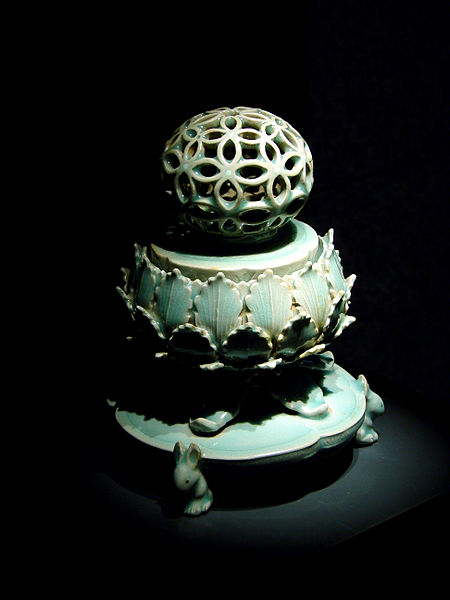
Celadon Incense Burner
(NT #95)
Goryeo Dynasty, 12c
15.3 cm (6 in) height
National Museum of Korea, Seoul
This much-loved, lotiform incense burner is divided into three parts: (1) a base that is supported by three small rabbits1, (2) a bowl, defined by horizontal rows of three-dimensional lotus leaves, and (3) a lid with a large openwork knob (the lotus bud) through which the incense smoke can escape2. The bluish-green glaze of this piece exhibits the "kingfisher" color so admired by Xu Jing in the 12th century. Superb techniques of manufacture include the piece's openwork (pierced surface of the knob), inlay (small dots at the junctures of the openwork), relief (veins on the leaves, small knobs around the base), and appliqué (rabbits, leaves).
1Why rabbits? Perhaps the base is implicated in lunar symbolism, as some scholars have it, but I think that it is just a charming example of Korean humor.
2The knob's openwork pattern of interlocking circles is called the "seven treasures design," after the Buddhist Seven Treasures, although no one is sure why. My theory is that every adjacent pair of four-petaled "flowers" in the design shares one petal between them, making a total of seven petals in each pair.


